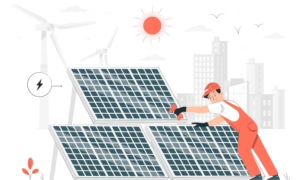Precision is key when it comes to residential HVAC systems. Every element matters, from ensuring optimal energy efficiency to maintaining a comfortable indoor environment. HVAC load calculators come into their own in this situation. These tools are essential for anybody wishing to maximize energy efficiency, improve occupant comfort, enhance indoor air quality, and lengthen the lifespan of HVAC equipment, not just industry professionals. We’ll delve into the realm of HVAC load calculators in this complete guide, looking at their use, advantages, types, and availability.
Knowing how to calculate HVAC load
Calculating the necessary thermal output capacity (expressed in BTUs) of a residential building is the essence of HVAC load calculation. The design and installation of HVAC systems that can effectively heat or cool a place are based on this capability. It is impossible to stress the importance of correct load calculations. They are crucial to attaining energy efficiency, guaranteeing occupants experience consistent comfort levels, and improving indoor air quality. An excessive or undersized HVAC system might arise from miscalculating the load, wasting energy and making you uncomfortable.
Basic HVAC Load Calculation Principles
Understanding the variables that affect HVAC load calculations is crucial for understanding them completely. These variables include the local climate and weather patterns, the building’s orientation and form, the kinds of insulation employed, and the types of building materials. Calculations take into consideration both heat absorption from sources like sunlight and appliances as well as heat loss from places like windows and walls. Reliable load calculations depend on accurate data collection, thus accurate measurements and assessments are essential.
Resources and Tools for Calculating Load
The methods for calculating HVAC load have changed over time, providing a variety of tools and resources to meet varied demands. These include specialist load calculation software, manual approaches like the Manual J standard, and process-simplifying online calculators and mobile apps. Working with experts who have performed load calculations before can help ensure accuracy and dependability, especially for challenging or significant projects.
Detailed Instructions for Carrying Out Load Calculations
We’ll give readers a step-by-step manual so they can learn load calculations. The gathering of important data, including building dimensions, insulation specifications, and occupancy considerations, will be covered in this part. The finer points of calculating heat gain and heat loss will be covered, as well as the need of accounting for safety margins and contingencies to guarantee system dependability.
Utilizing Load Calculations to Size Systems
The choice of HVAC equipment is made simple with precise load estimations at hand. In order to avoid typical errors like oversized or undersized systems, readers will understand how load estimations directly affect system sizing. The importance of energy efficiency will be emphasized, with special attention paid to how accurate load estimations result in lower energy costs and a less environmental effect.
Applications in the Real World and Case Studies
The value of HVAC load estimations is best illustrated by real-world situations. In this section, we’ll talk about how to calculate a load effectively and show case studies of real energy savings. We’ll also talk about the difficulties encountered in the field and the important lessons we’ve gained from them.
A Few Pointers to Improve HVAC Load Calculations
We’ll provide helpful advice for increasing HVAC load calculations to wrap up our tour. The need of staying current with industry standards and best practices will be stressed, as well as typical pitfalls to avoid and techniques for ongoing improvement.
The Calculation of HVAC Load in the Future
We’ll look into the future and investigate trends in HVAC load assessments as technology develops and sustainability becomes more important. We’ll keep an eye out for new developments in technology, sustainability issues, and the changing nature of load estimates in the HVAC sector.
Conclusion
In conclusion, anyone who wants to improve energy efficiency, occupant comfort, indoor air quality, and HVAC equipment longevity should strive to become an expert in HVAC load calculations. Readers who adhere to this thorough manual will acquire the expertise and self-assurance required to excel in this critical area of residential HVAC systems. And with the help of an innovative HVAC Load Calculation App, they can maximize energy efficiency and make every indoor space as cozy and environmentally friendly as feasible.








































